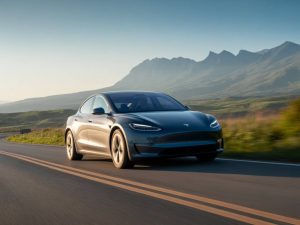How the u.s. government is supporting the expansion of ev charging stations

how the u.s. government is supporting the expansion of ev charging stations
The United States is steadily accelerating its efforts to transition to electric vehicles (EVs) as part of a broader push towards sustainable energy and reducing carbon emissions. A critical aspect of making this transition viable and convenient for consumers is the establishment and expansion of EV charging infrastructure. Recognizing the importance of this infrastructure, the U.S. government has undertaken several initiatives to support the growth of EV charging stations across the nation. In this article, we will delve into the various ways in which the government is facilitating this expansion and the implications for the future of electric mobility.
Federal Grants and Funding Programs
One of the most significant ways the U.S. government is promoting the expansion of EV charging stations is through federal grants and funding programs. These financial incentives aim to reduce the upfront costs associated with the installation and maintenance of EV charging infrastructure. Key programs include:
- Volkswagen Settlement Funds: Following the diesel emissions scandal, Volkswagen was mandated to establish the Environmental Mitigation Trust. States can utilize these funds to invest in EV charging infrastructure, among other projects aimed at reducing nitrogen oxide emissions.
- Federal Transit Administration (FTA) Low or No Emission Vehicle Program: This program provides funding to state and local government authorities for the purchase or lease of zero-emission and low-emission transit buses, along with the supporting charging infrastructure.
- Congestion Mitigation and Air Quality Improvement (CMAQ) Program: Administered by the Federal Highway Administration (FHWA), the CMAQ program funds transportation projects that contribute to air quality improvements and provide congestion relief, including the development of EV charging stations.
- Alternative Fuel Infrastructure Tax Credit: This tax credit allows businesses and individuals to deduct up to 30% of the cost (capped at $30,000) for the installation of alternative fuel infrastructure, including EV charging stations.
State-Level Initiatives and Incentives
While federal programs provide a substantial foundation, individual states also play a crucial role in promoting EV infrastructure through their own initiatives and incentives. Examples of these state-level efforts include:
- California’s Clean Vehicle Rebate Project (CVRP): This program offers rebates for the purchase or lease of qualified EVs, with additional incentives for low-income residents. California also has numerous grant programs aimed at expanding EV charging networks, such as the California Electric Vehicle Infrastructure Project (CALeVIP).
- New York’s Charge Ready NY: This program provides rebates of up to $4,000 per charging port for public and workplace stations. New York also supports the expansion of EV infrastructure through the NYSERDA Charge NY Initiative.
- Washington State’s EV Infrastructure Bank: Washington provides low-interest loans to public and private entities for the purpose of financing EV charging infrastructure projects.
Public-Private Partnerships
Public-private partnerships (PPPs) are another vital mechanism through which the U.S. government is fostering the expansion of EV charging stations. By collaborating with private companies, government agencies can leverage additional resources, expertise, and efficiency to scale EV infrastructure more rapidly. Examples of successful PPPs include:
- Electrify America: As part of the Volkswagen settlement, Electrify America is investing $2 billion over ten years to promote zero-emission vehicle adoption, including a significant focus on establishing a nationwide network of EV charging stations. The initiative collaborates with state governments, local municipalities, and private sector partners.
- EVgo and General Motors: In partnership with General Motors, EVgo is working to triple its network by adding more than 2,700 new fast chargers over the next five years, targeting urban areas and underserved communities.
- Tesla and Decarbonization Initiatives: Tesla has been actively working with various state governments to construct supercharging stations. For instance, Tesla collaborates with the state of Texas to build its charging network.
Policy and Regulatory Support
Regulatory measures and supportive policies are also key tools used by the U.S. government to stimulate the development of EV charging infrastructure. These policies create a favorable environment for businesses and local governments to invest in and establish EV charging stations. Noteworthy policies and regulations include:
- Corporate Average Fuel Economy (CAFE) Standards: These federal standards require automakers to improve the average fuel efficiency of their vehicles, indirectly incentivizing the production and adoption of electric vehicles.
- Clean Energy Standards and Mandates: Several states have established mandates requiring a portion of their energy mix to come from renewable sources. This indirectly supports the use of electric vehicles by ensuring that the electricity used to charge them is clean.
- EV Charging Minimum Standards: The FHWA is developing minimum standards for EV chargers installed using federal funds. These standards aim to ensure reliability, accessibility, and security in the charging infrastructure.
- Zero Emission Vehicle (ZEV) Programs: Several states, including California and New York, have adopted ZEV programs that require automakers to sell a certain number of electric or hybrid vehicles. These programs often include provisions for charging infrastructure expansion.
Infrastructure Investment and Jobs Act (IIJA)
A landmark piece of legislation that underscores the federal government’s commitment to EV infrastructure is the Infrastructure Investment and Jobs Act (IIJA). Signed into law in November 2021, the IIJA allocates significant funding towards modernizing America’s infrastructure, with EV charging stations being a pivotal area of focus. Key provisions of the IIJA related to EV infrastructure include:
- National Electric Vehicle Formula Program: This program provides $5 billion over five years to help states create a network of EV charging stations along designated alternative fuel corridors.
- Charging and Fueling Infrastructure Grant Program: This $2.5 billion program aims to facilitate community-based charging infrastructure projects, emphasizing rural, underserved, and disadvantaged communities.
- Upgrading Electric Grid Infrastructure: The IIJA includes funding to support the enhancement of the electric grid, making it more robust and capable of handling increased demand from widespread EV adoption.
Technological Advancements and Innovations
Supporting the expansion of EV charging stations also involves investing in technological advancements and innovations. The U.S. government is funding research and development projects aimed at improving the efficiency, speed, and accessibility of EV chargers. Notable areas of focus include:
- Ultra-Fast Charging Technologies: Research efforts are centered on developing ultra-fast chargers that can significantly reduce the time required to charge an EV, making EVs more convenient for long-distance travel.
- Wireless Charging Systems: Wireless or inductive charging technologies are being explored to provide a hassle-free charging experience, allowing EVs to charge while parked without the need for physical connectors.
- Vehicle-to-Grid (V2G) Capabilities: V2G technology enables EVs to supply power back to the grid during peak demand times. This bi-directional flow of electricity can enhance grid stability and provide additional revenue streams for EV owners.
The concerted efforts of federal, state, and local governments, in collaboration with private sector partners, are creating a robust and comprehensive framework to support the rapid expansion of electric vehicle charging infrastructure across the United States. These initiatives are not only lowering the barriers to EV adoption but are also positioning the country as a leader in the global shift towards sustainable transportation. As the infrastructure continues to evolve and improve, consumers will find it increasingly convenient and viable to make the switch to electric vehicles, thereby contributing to a cleaner and greener future.








